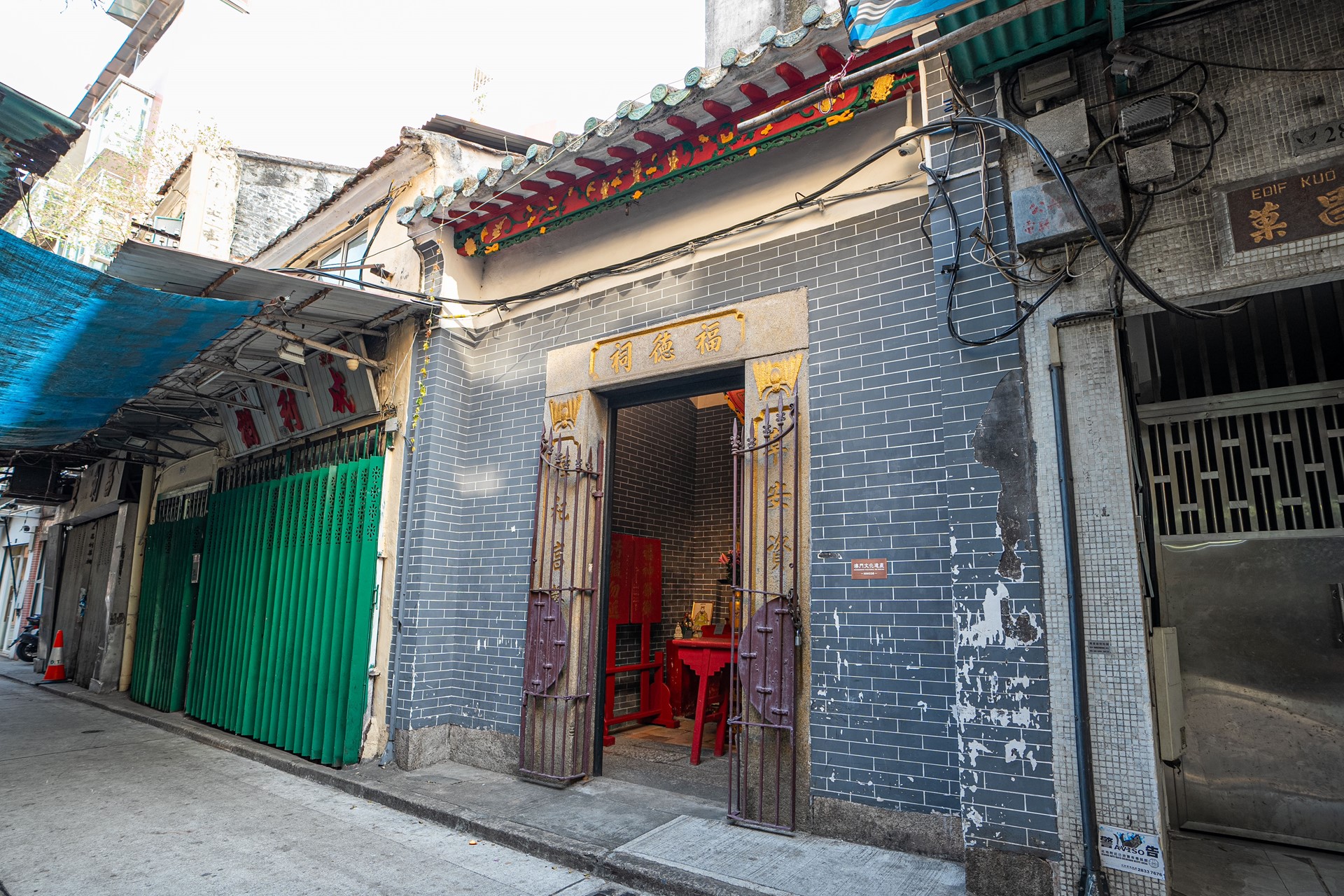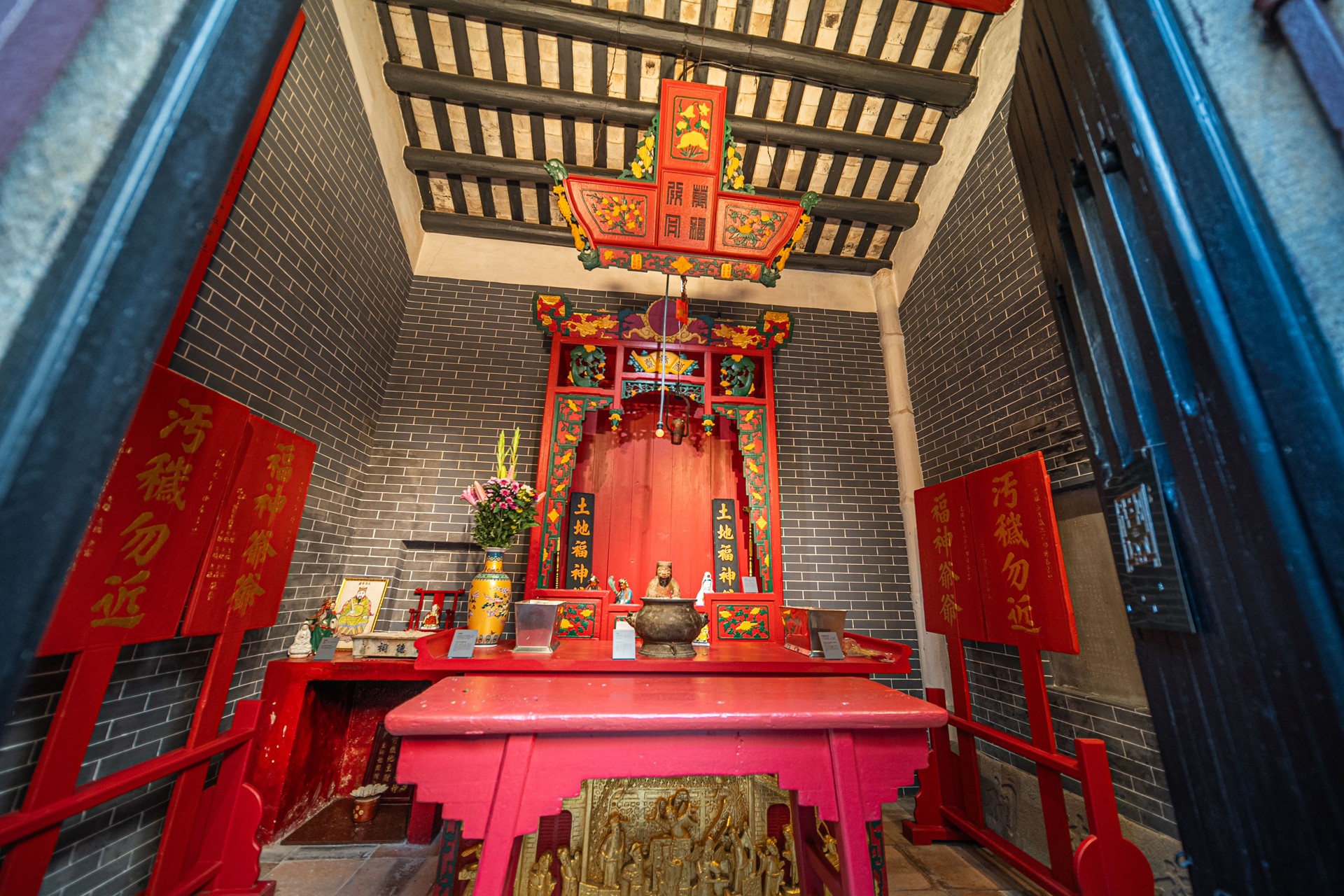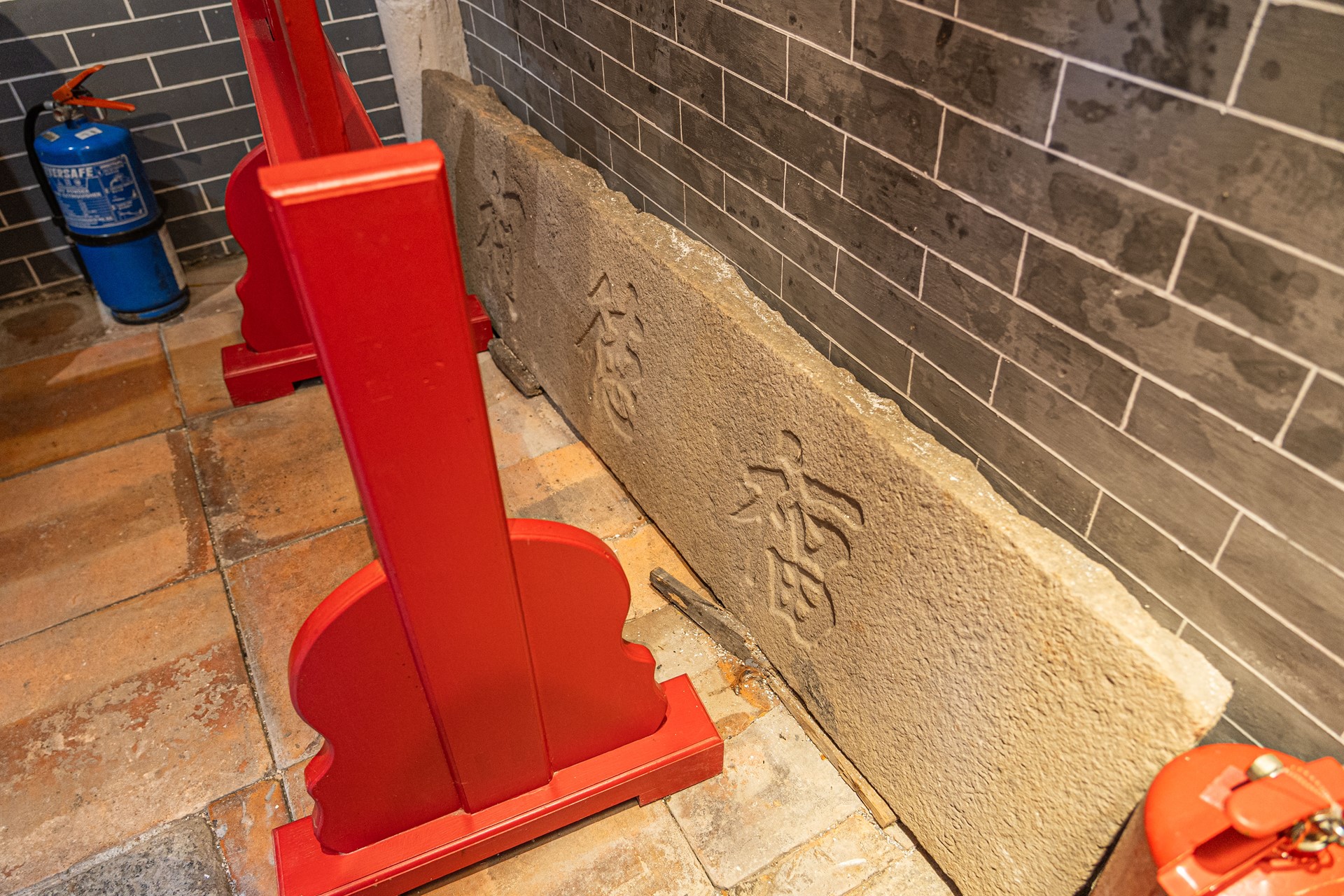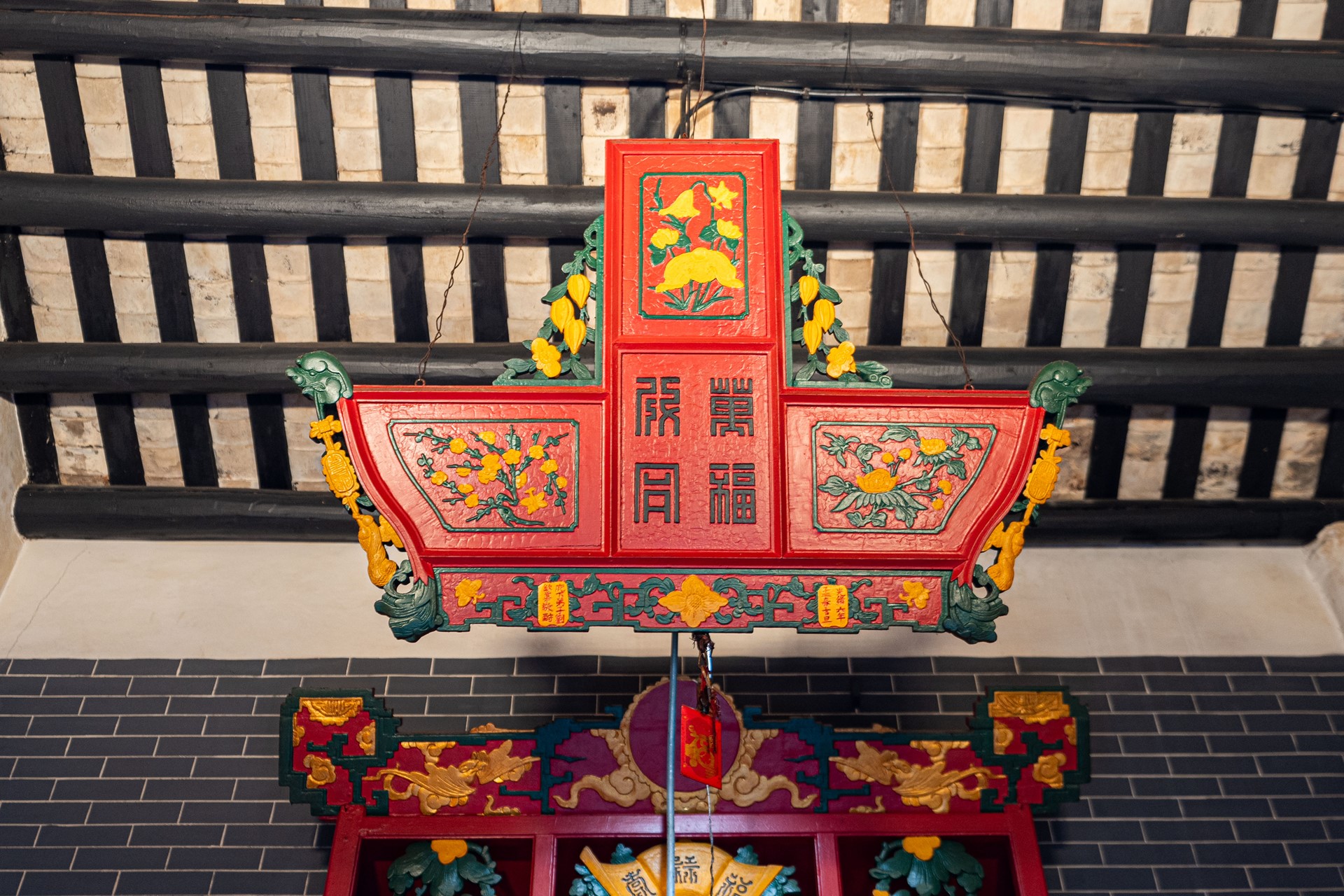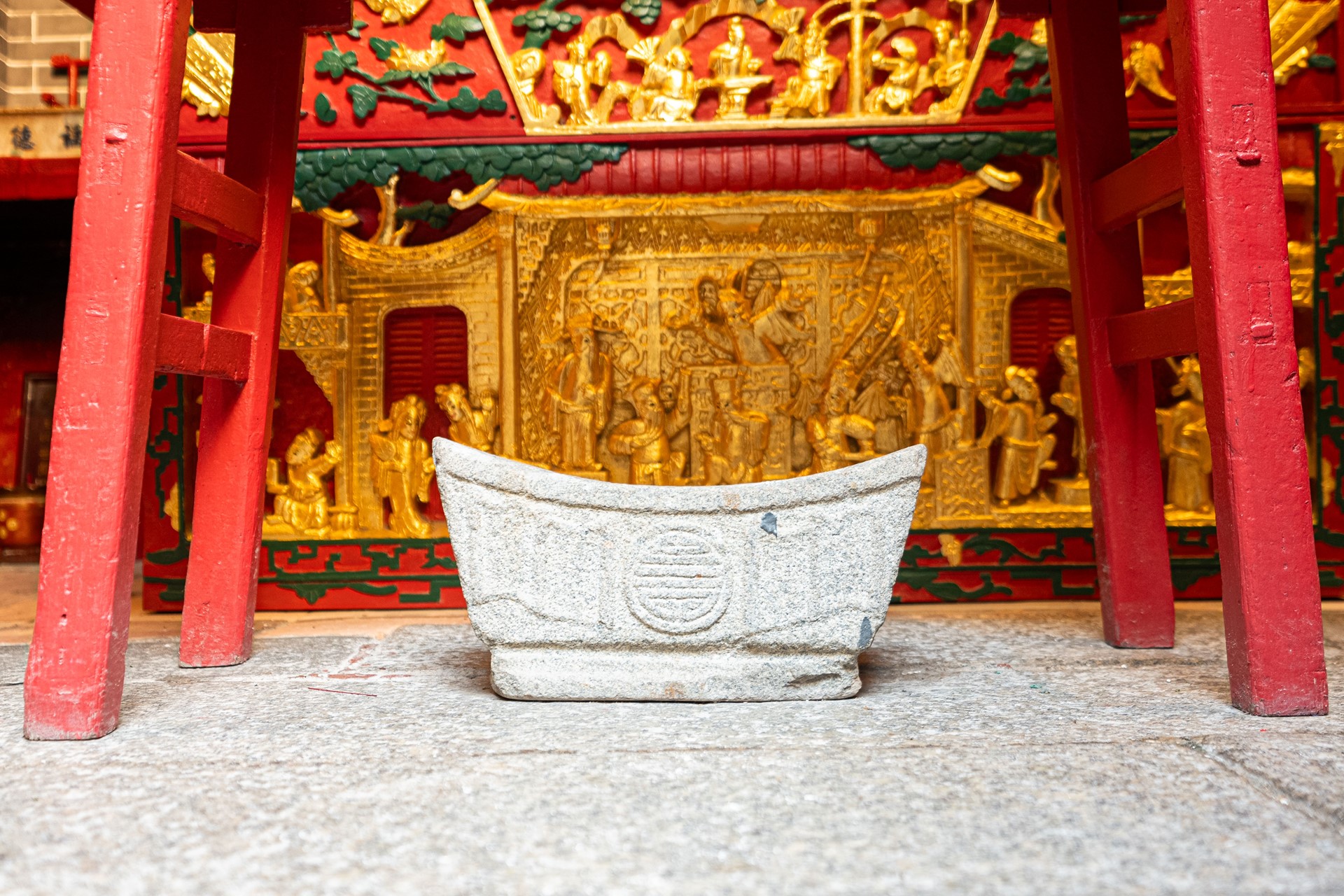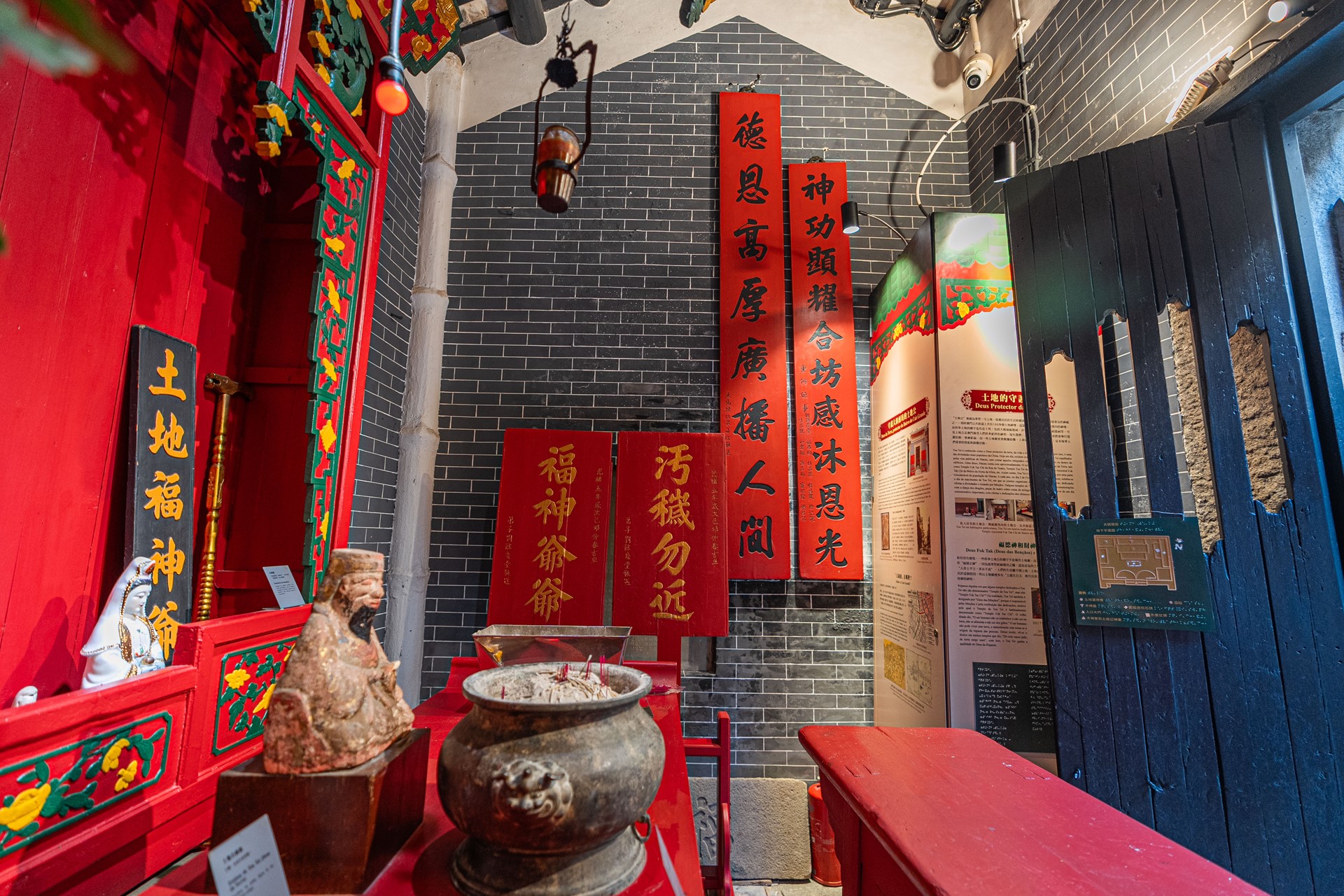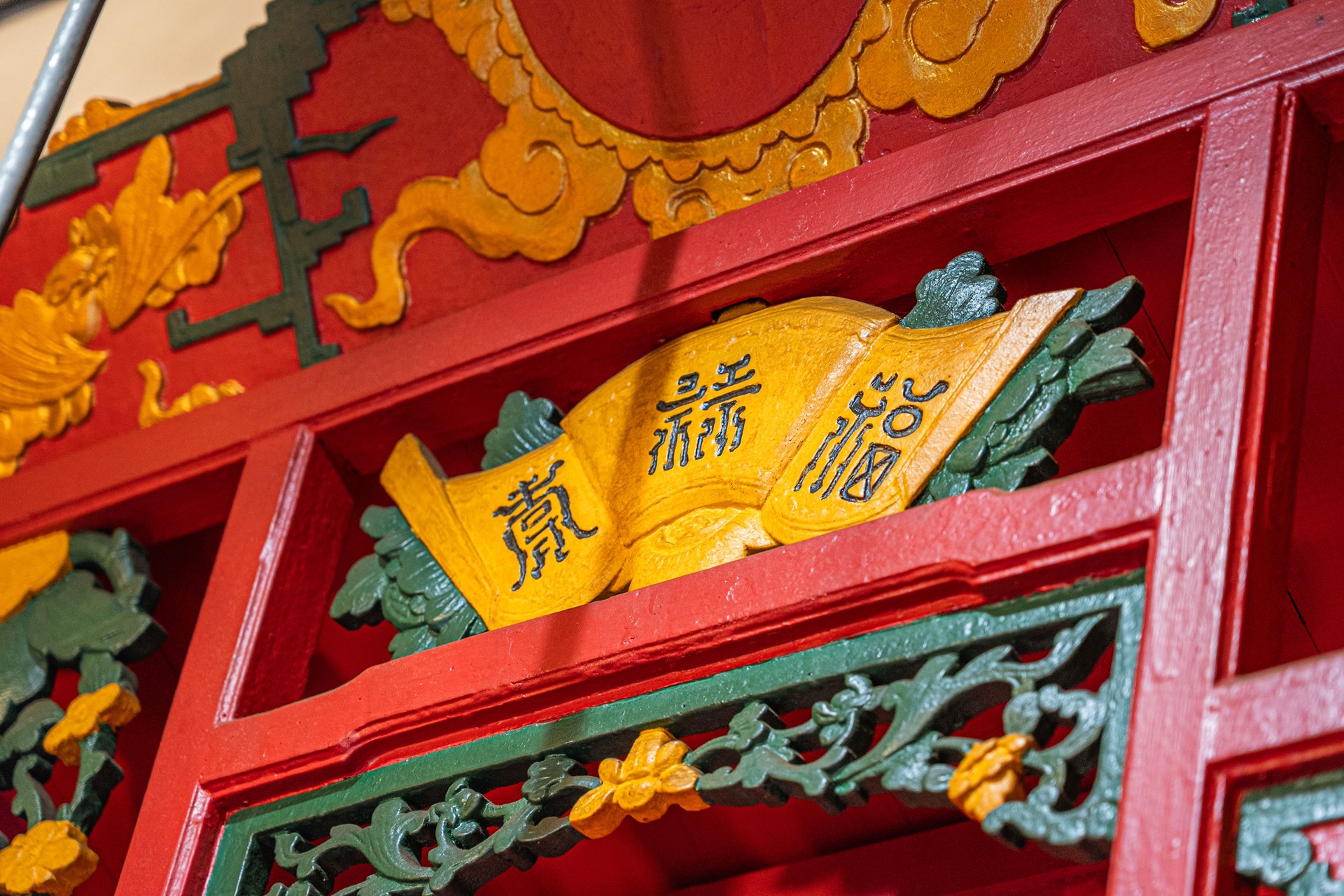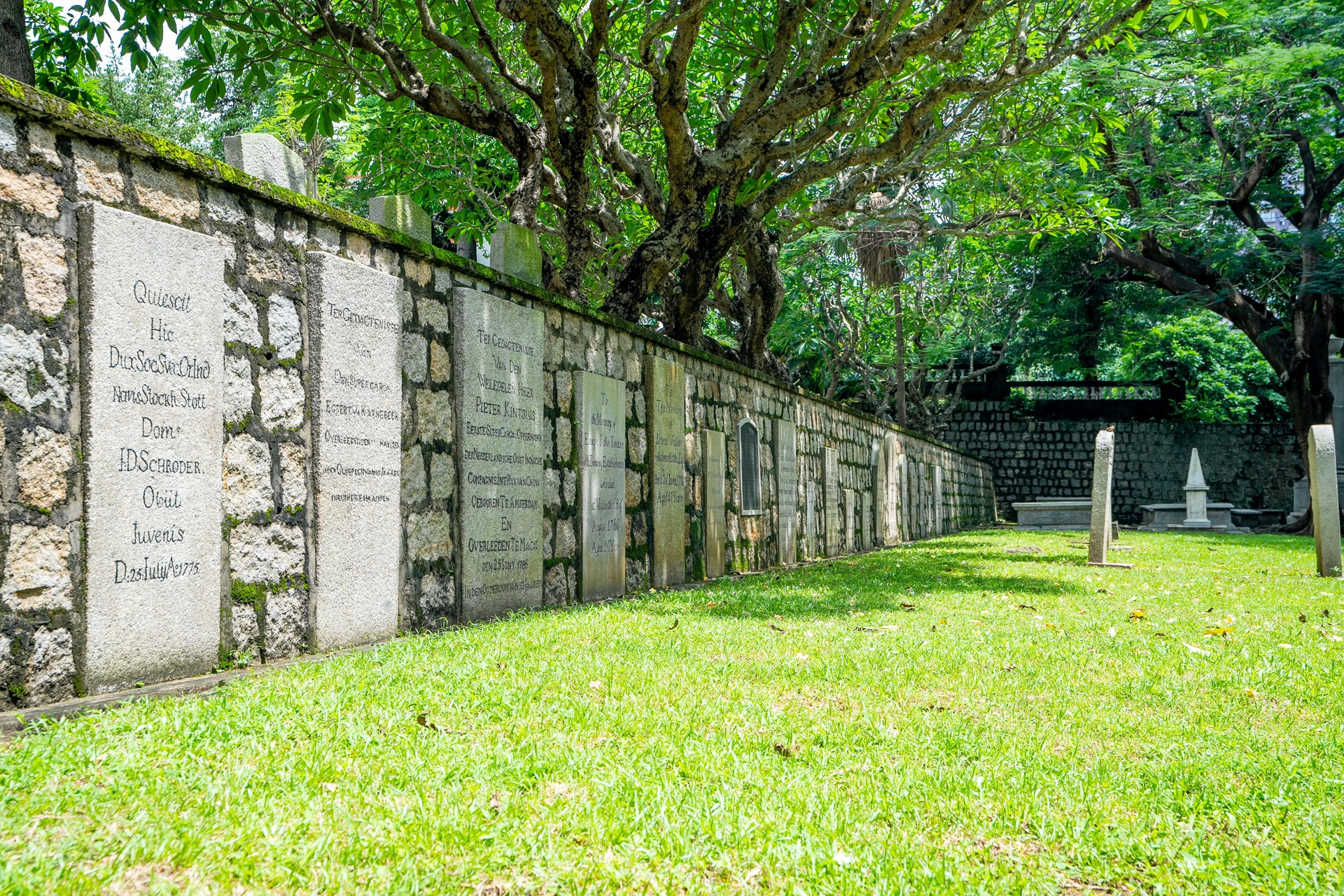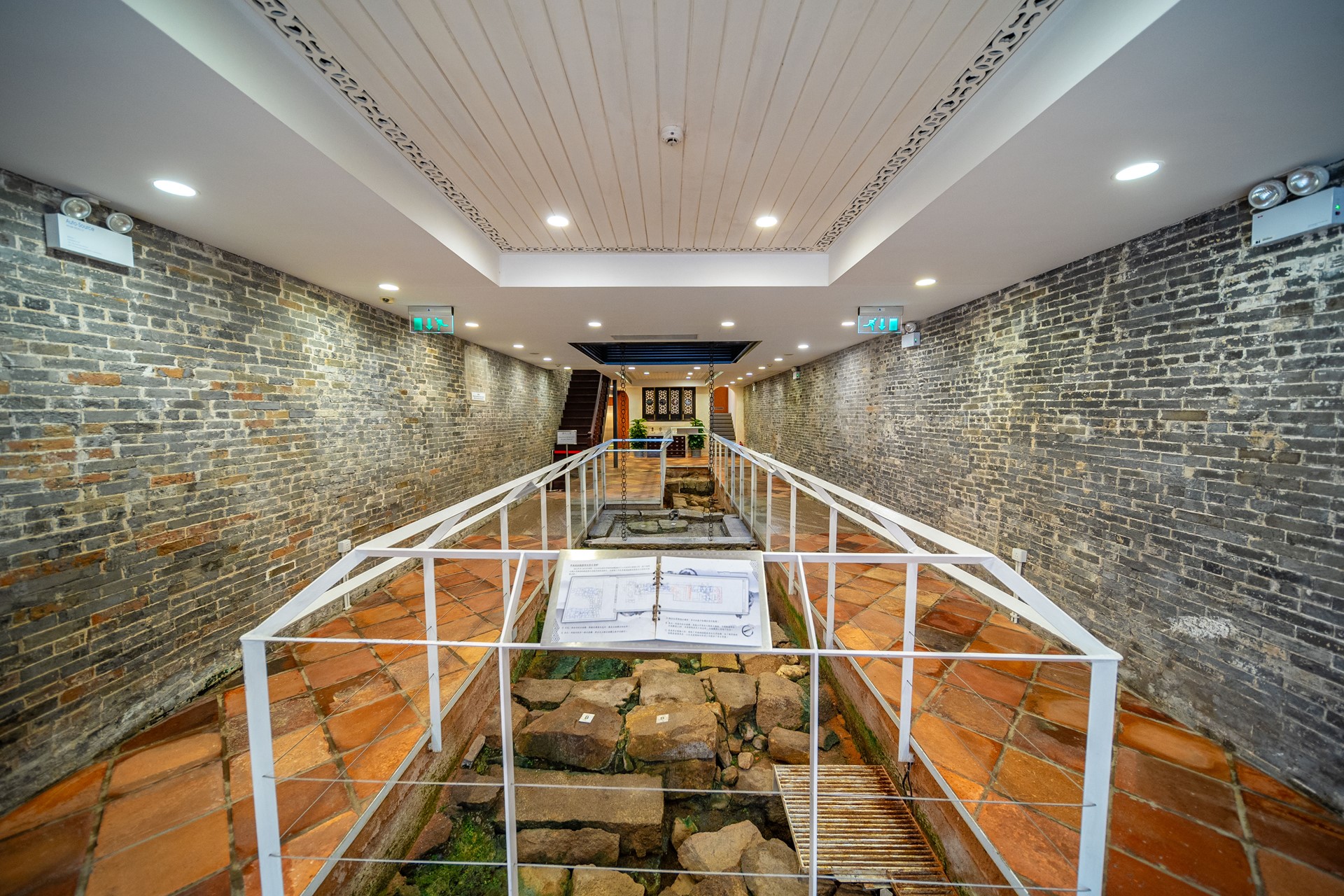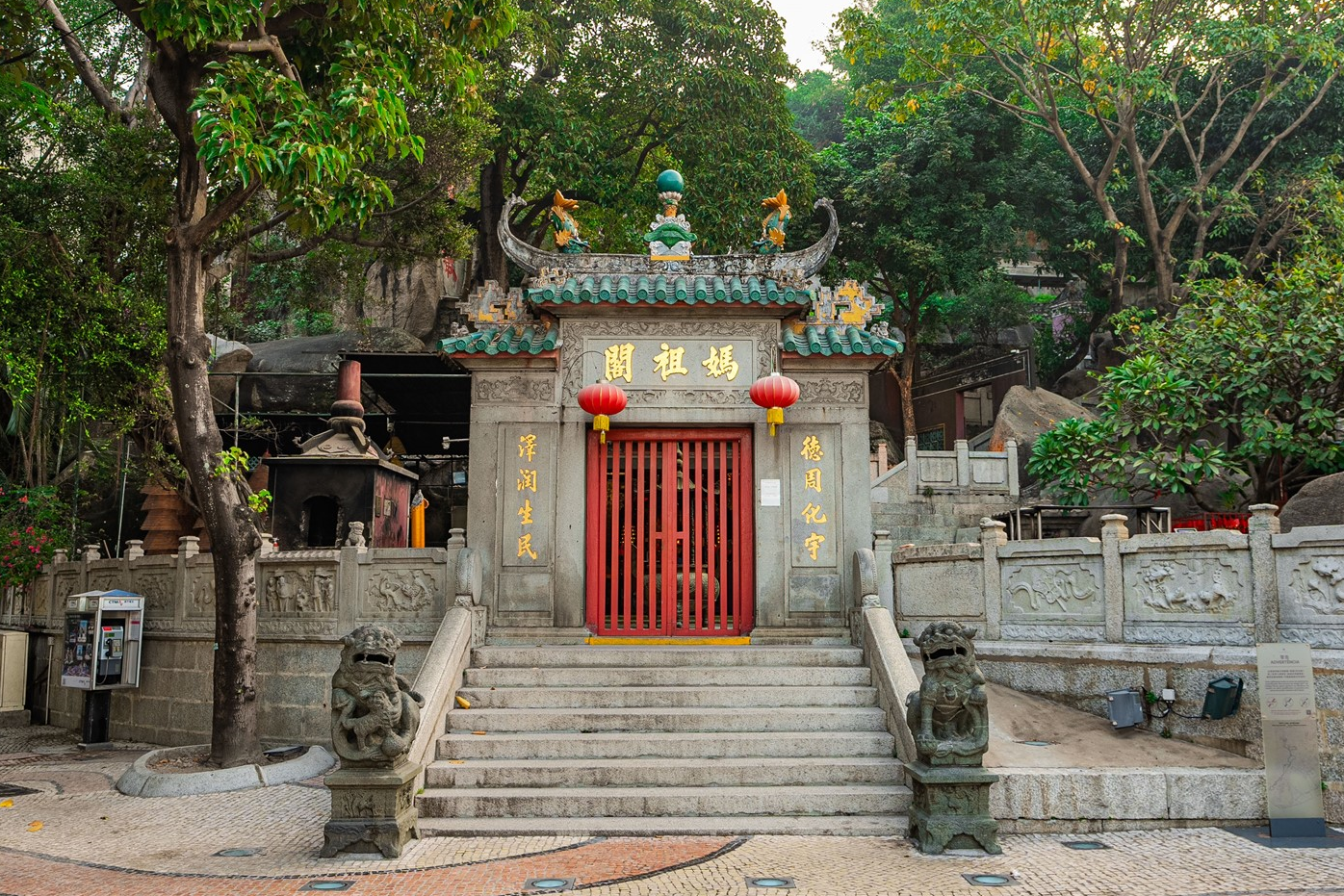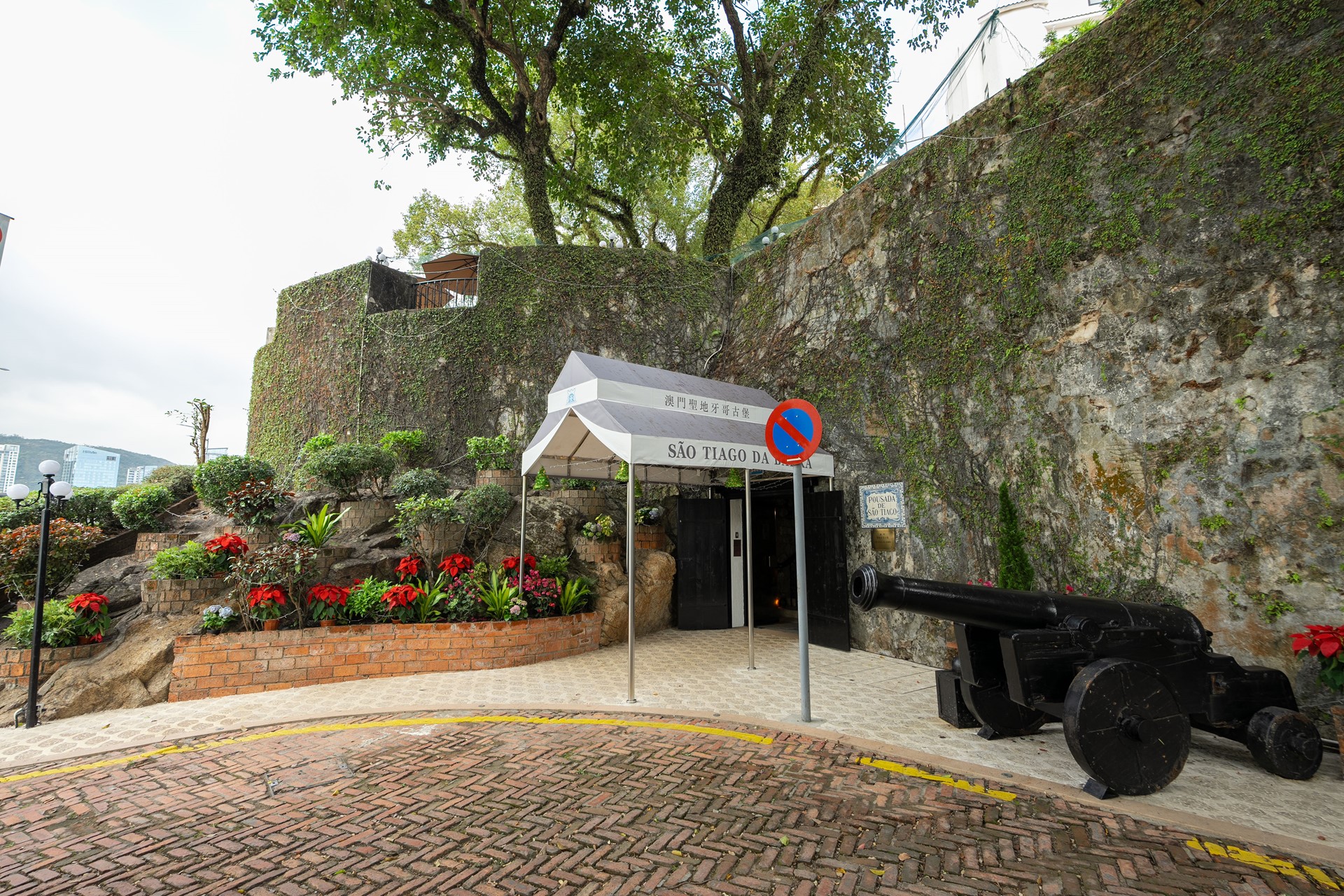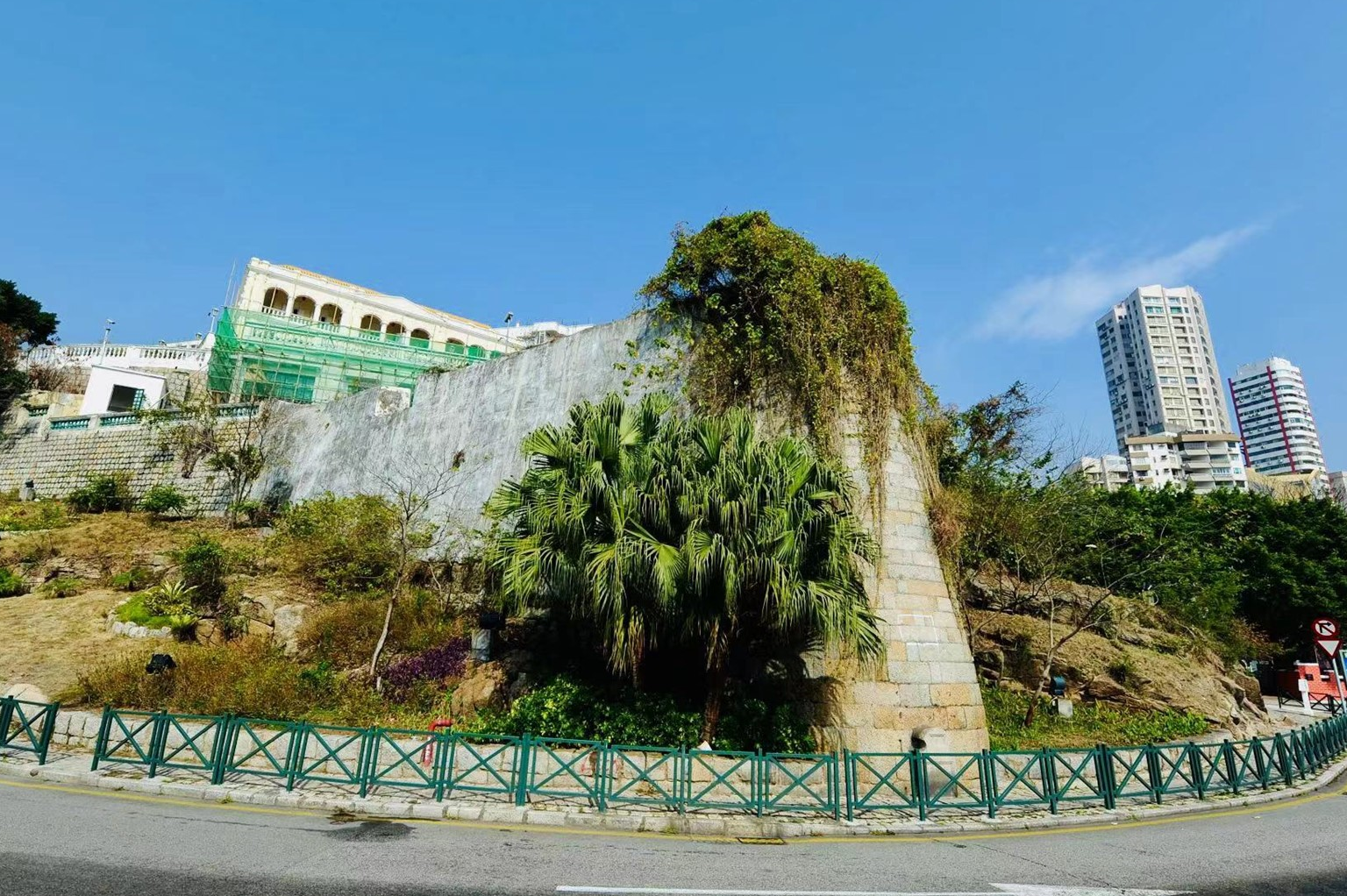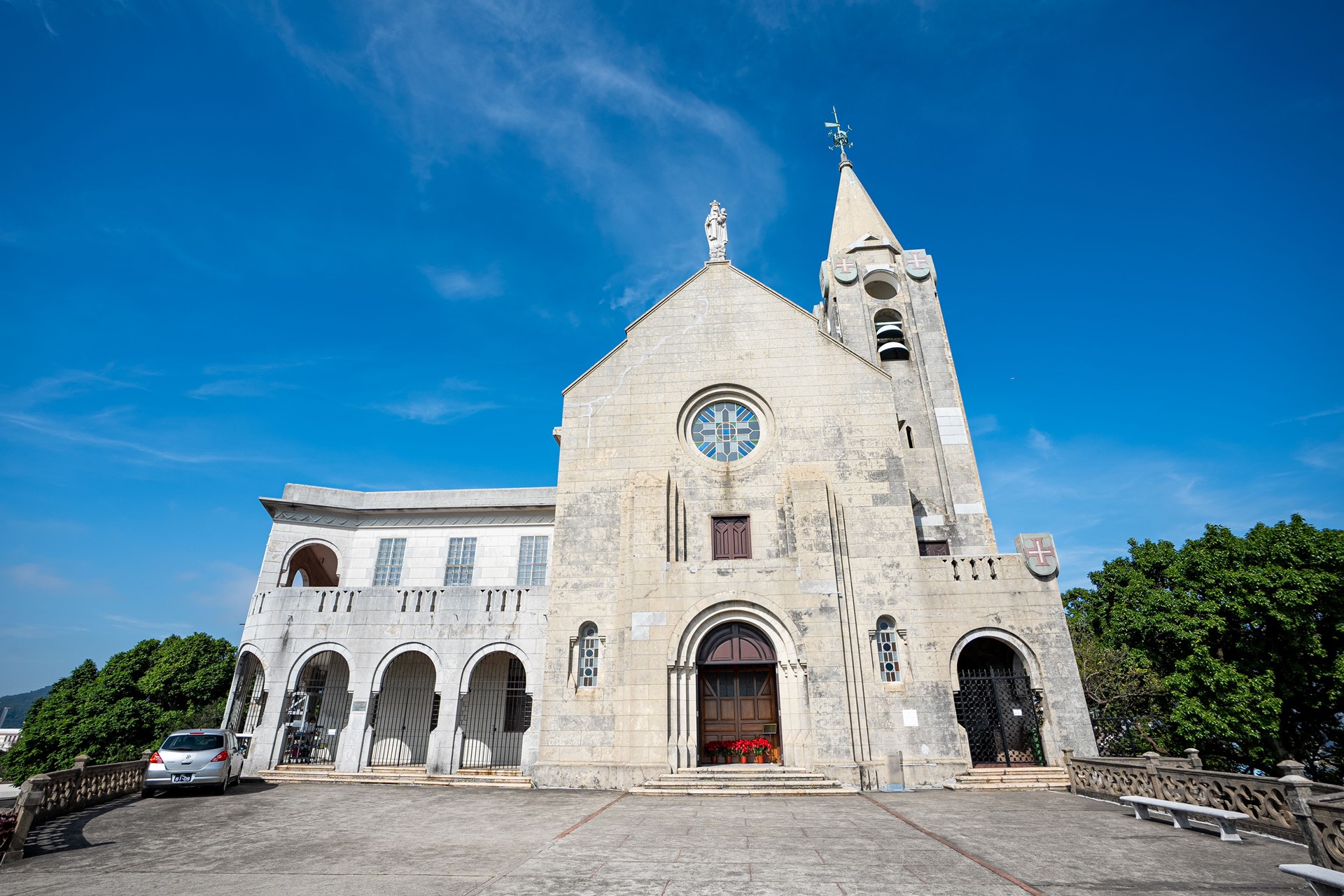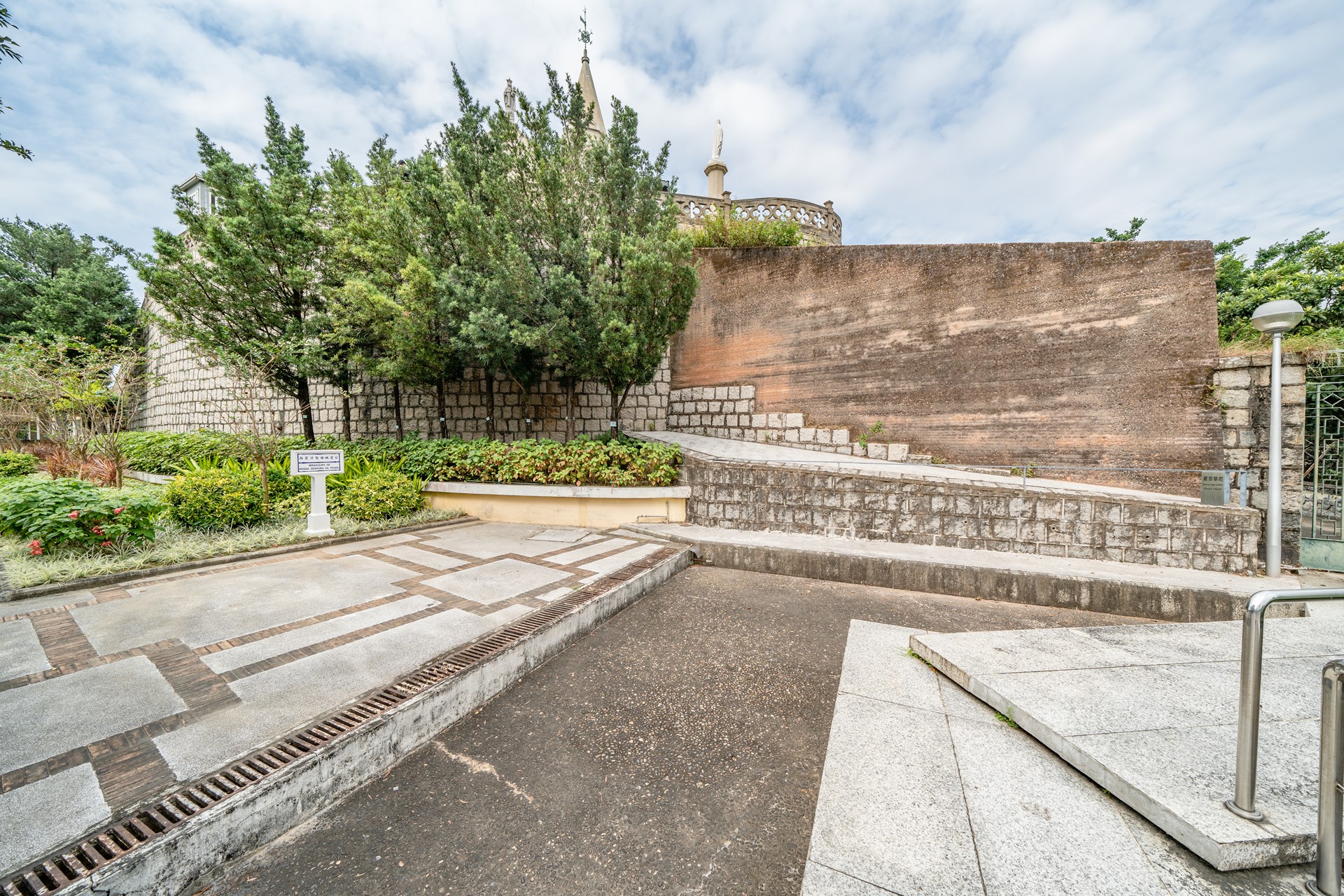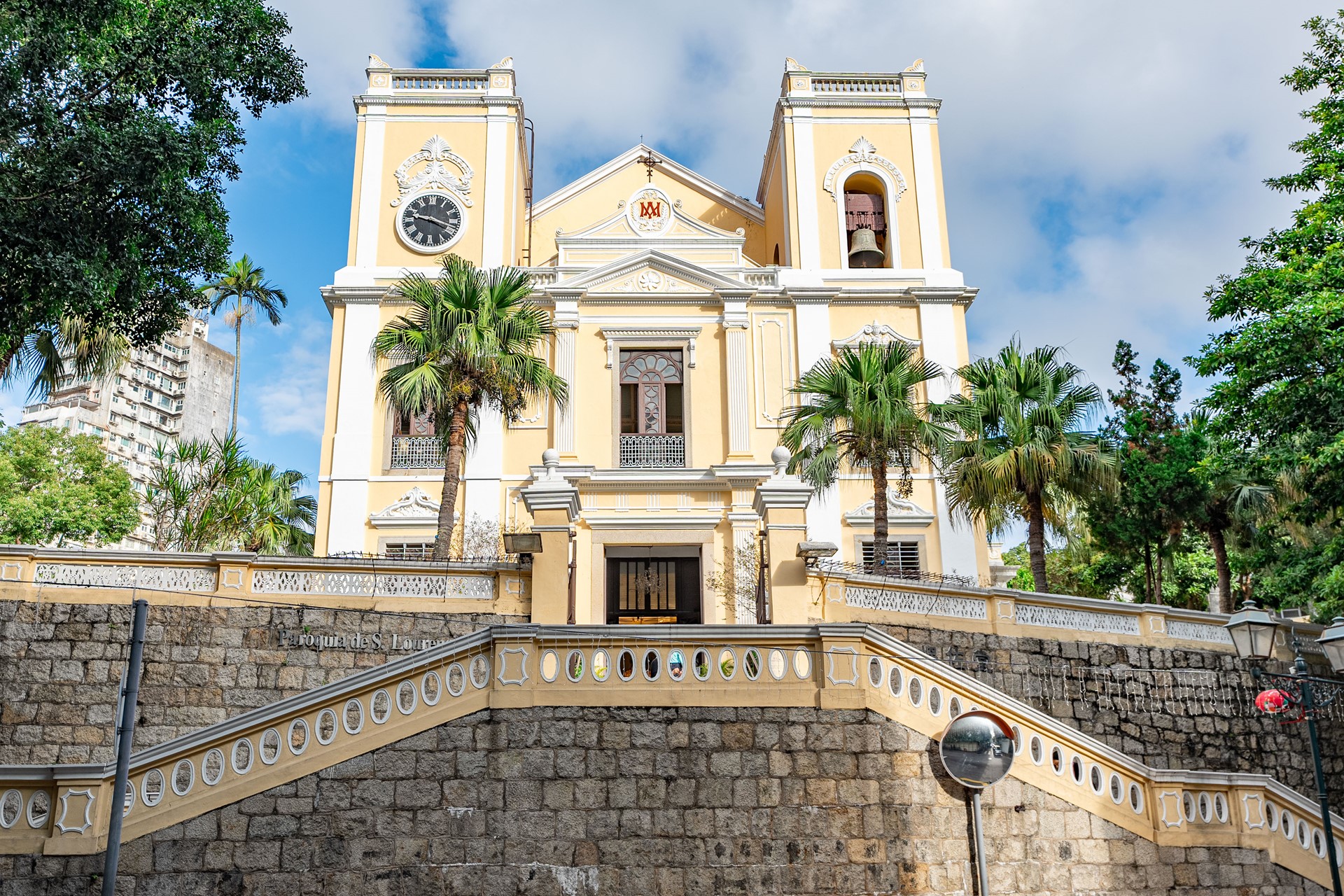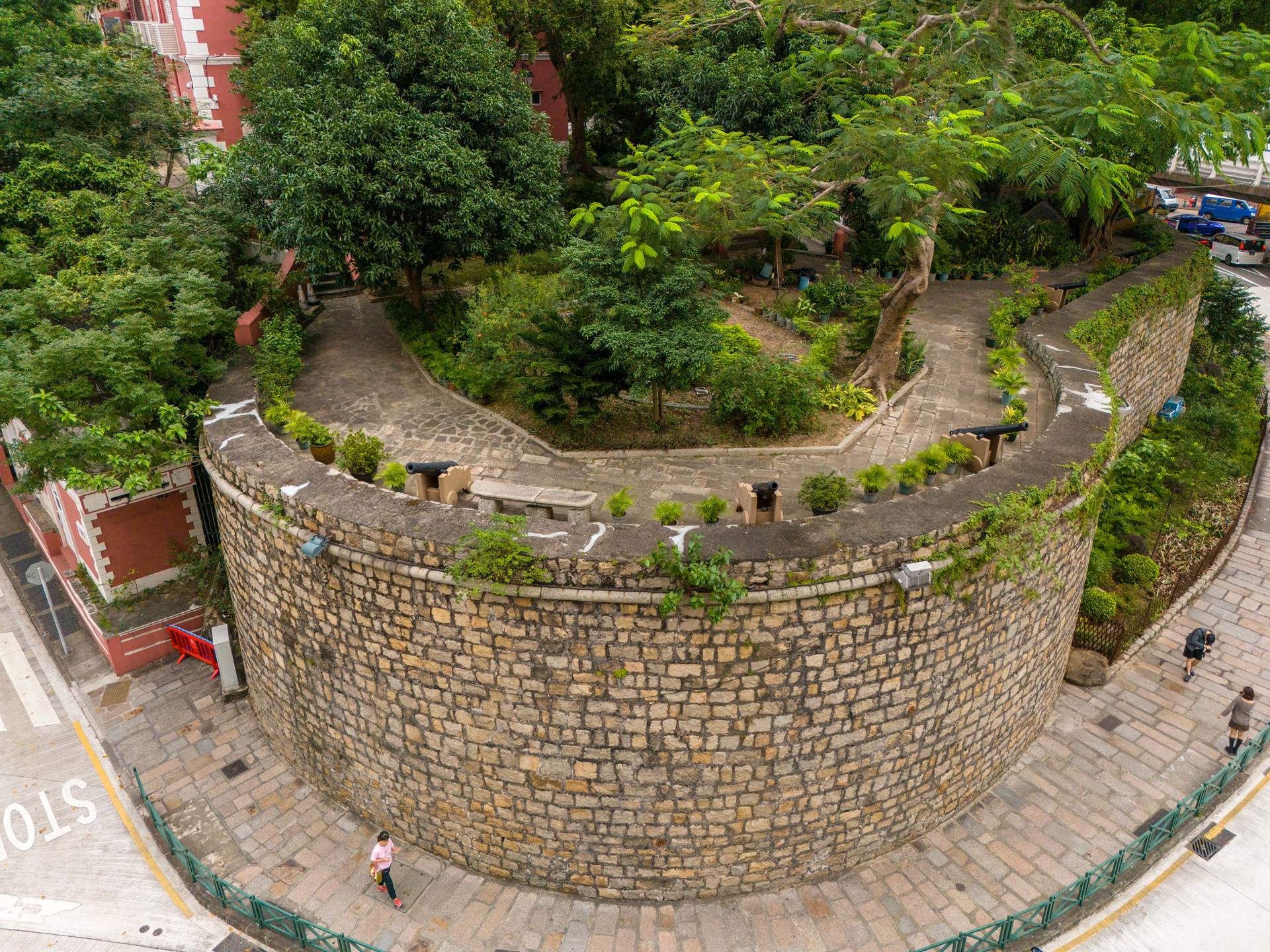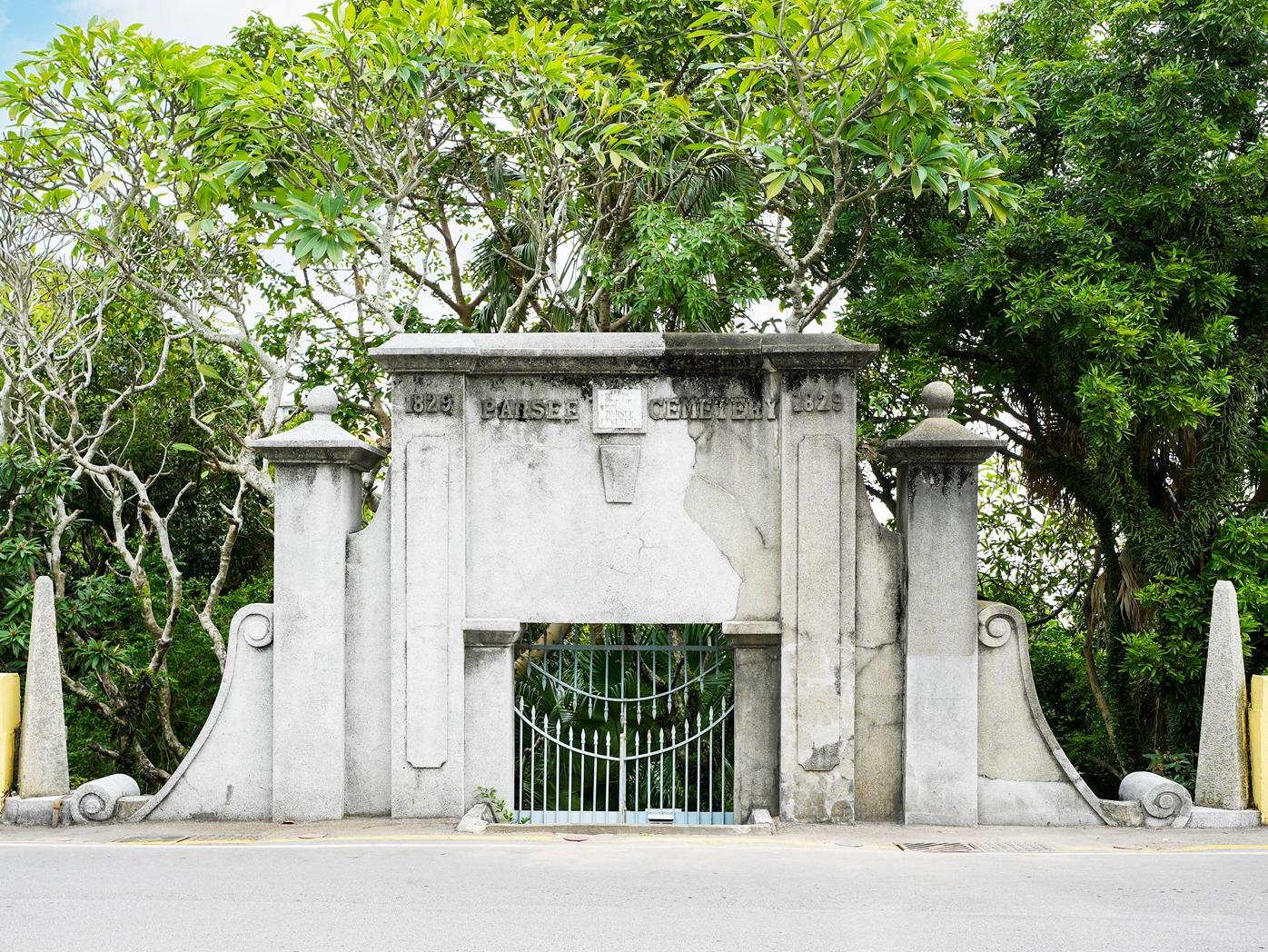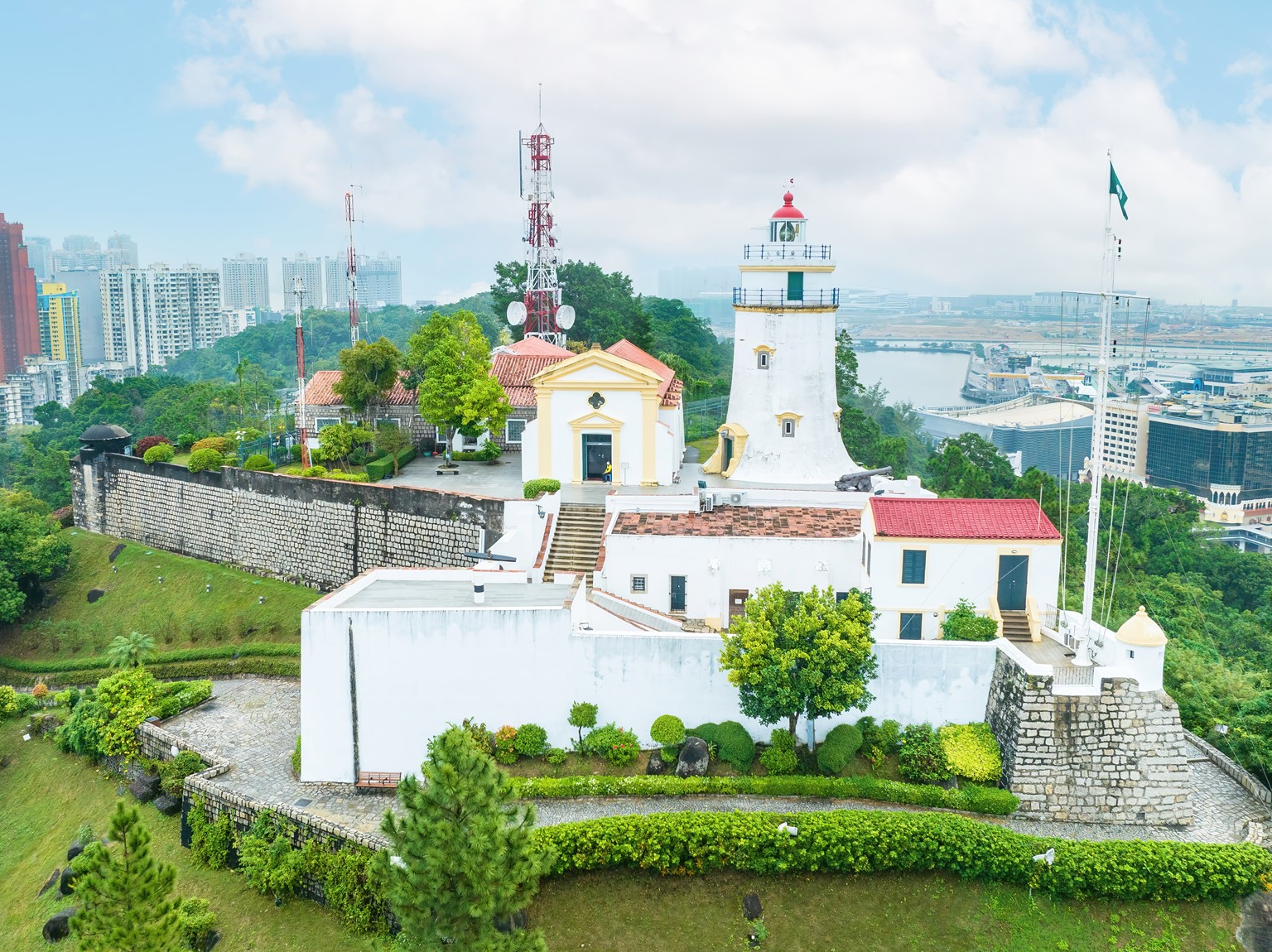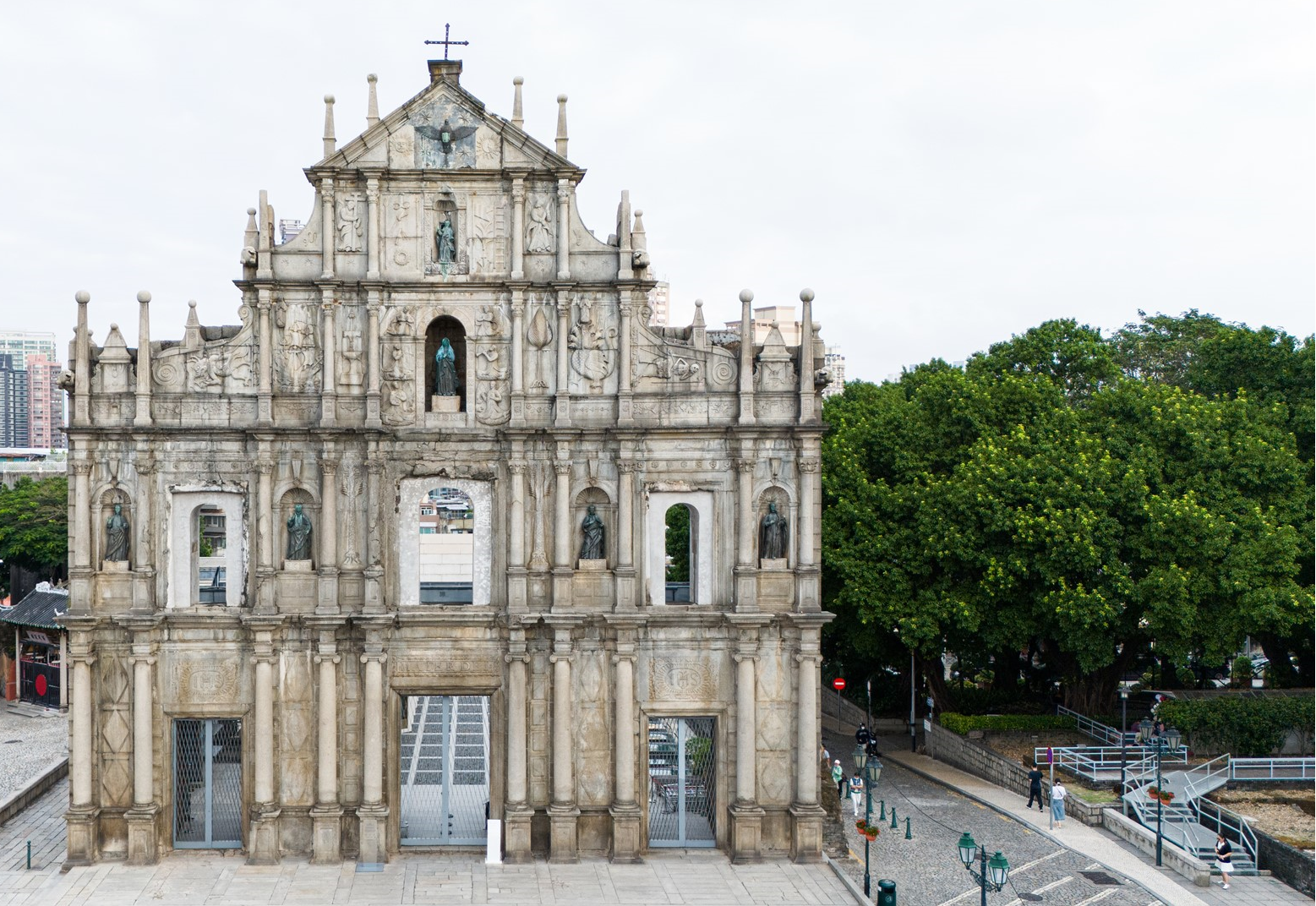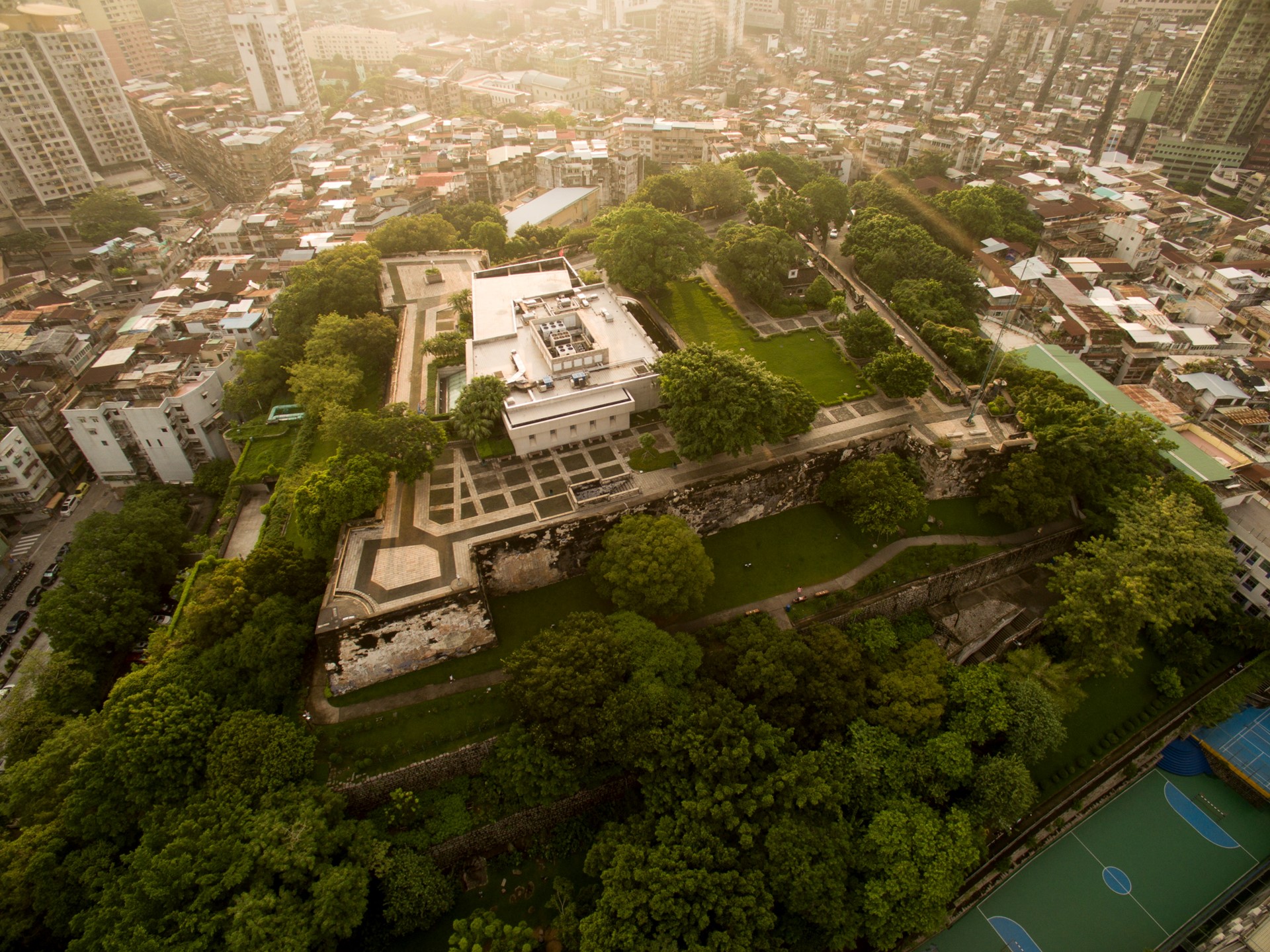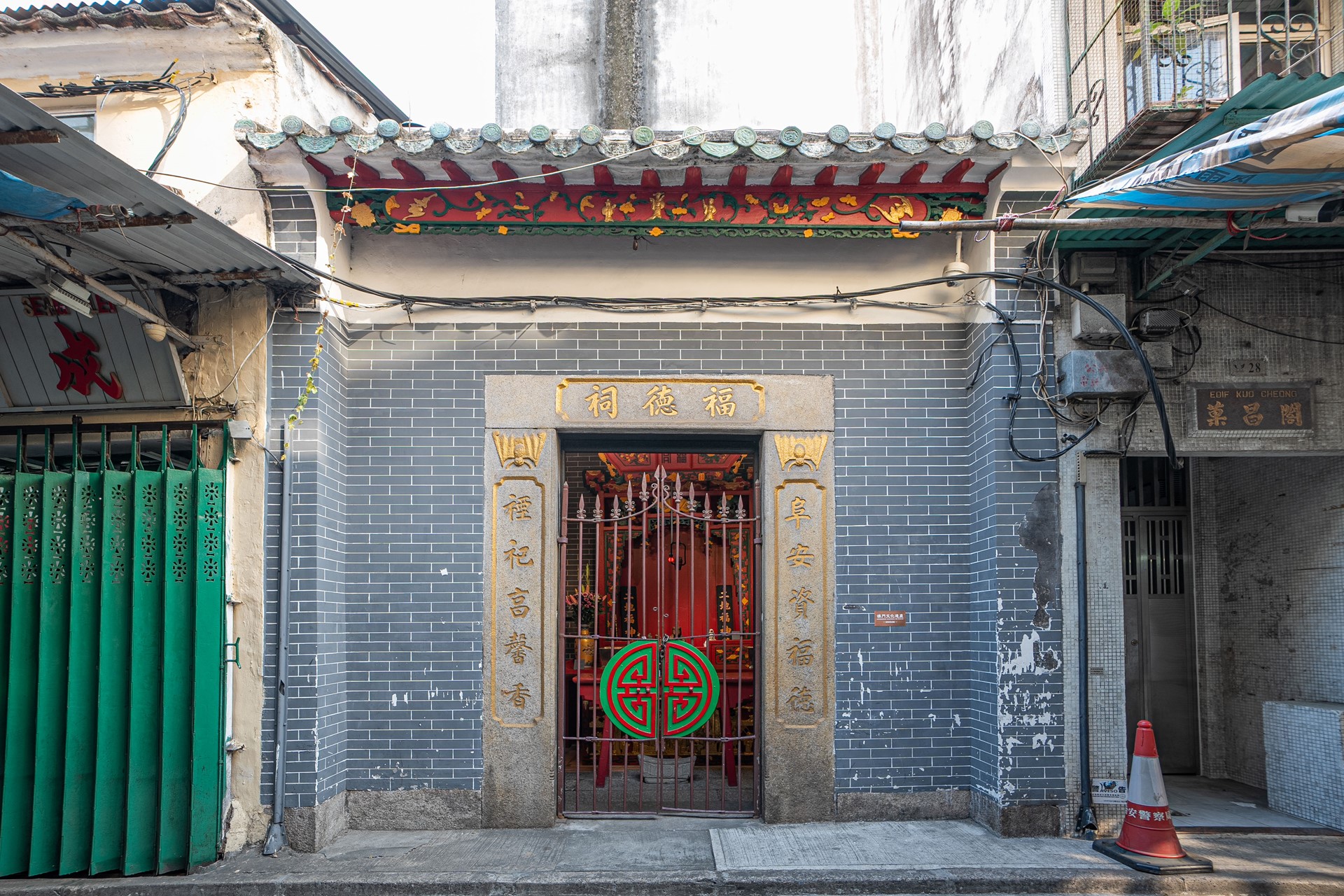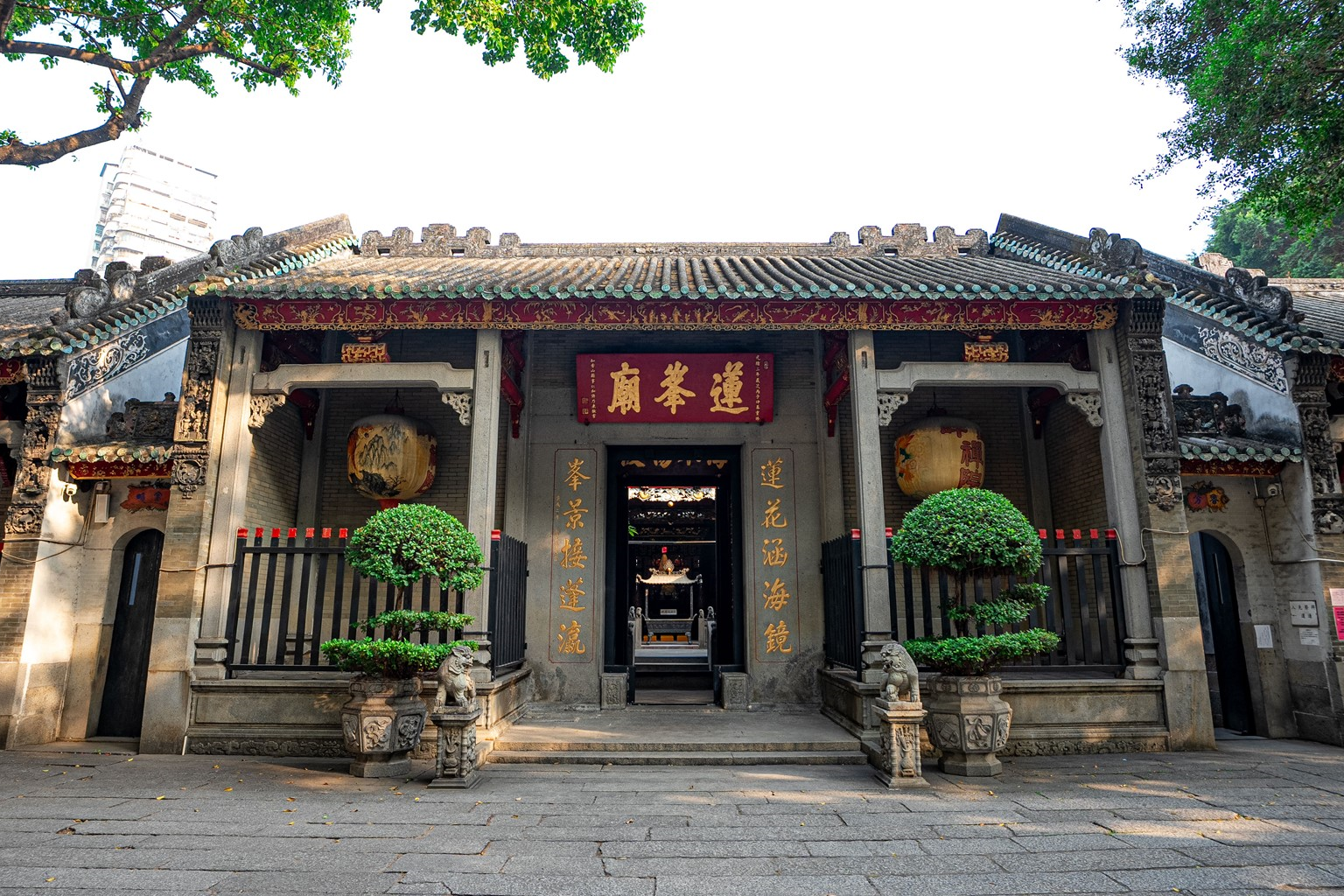As one of the many Foc Tac temples (dedicated to Tou Tei, the Earth God) in the city, Foc Tac Temple located in Rua do Teatro is a small Lingnan style building, with only one-storey, one single-room, and one single bay, with a traditional Chinese style pitched roof. The building features a granite door frame, where there is a stone-carved couplet at the top, with decorations representing a pair of bats, and other finely carved decorations on the eave boards. Inside, the main altar is dedicated to “Tou Tei Kung”, the Earth God, with a side altar dedicated to “Tou Tei Po”, the Earth Goddess, a combination that is rare to find in Macao. The temple also has incense tables, incense burners, couplets and ceremonial boards, which were donated by merchants and residents from the district over the years.
When the Haijin (sea ban) was terminated in 1684, the Qing government established four major customs branches, respectively in Jiangsu, Zhejiang, Fujian and Guangdong. In 1688, Guanbu xingtai (the Guangdong Customs Supervision Office), one of the seven branches under the Guangdong Customs, was set up in Macao. It supervised overseas trade, with 4 taxation offices near Damatou (Rua do Teatro), A-Ma Temple, Praia Grande, and Border Gate. The area around Rua do Teatro, over the shallow “North Bay”, housed an important pier during the Ming and Qing dynasties, and Foc Tac Temple located in Rua do Teatro, was built before 1796, and was in fact the guardian temple of that pier terminal at that time.
From the mid-19th century onwards, the old Portuguese administration in Macao carried out major land-reclamation works in the “North Bay”, including the area to the west of today’s Rua do Teatro. Some local streets had their Chinese name designations referring the former ferry piers. For example, the Chinese name of Rua do Teatro is Damatou (Big Pier), and the Chinese designation of Rua dos Faitiões is also related to a type of boat. Nowadays, the former buildings and facilities related to the old maritime activities, such as the Damatou pier, Guanbu xingtai and the Damatou Taxation Office, no longer exist, with only the Foc Tac Temple (in Rua do Teatro) remaining in the “North Bay” area of Inner Harbour, as a surviving architectural remnant of that bygone prosperous era. Being one of the seven branches of the Guangdong Customs that was set up in the city during the Qing dynasty, it also shows that Macao had intense maritime trade relations with Western countries. The Foc Tac Temple, built near the former pier, served as a place of worship for the local merchants, residents and people who were engaged in the old maritime activities, serving as an important testimony about the development of the maritime trade and the urban transformation of Macao.
The Belief and Customs of Tou Tei (the Earth God) in Macao has a long tradition in Macao. The Tou Tei Celebrations takes place every year on the 2nd day of the 2nd lunar month, and some local Tou Tei temples still hold grand celebrations, including worshipping rituals and prayers, lion dances, performances of Traditional Chinese Operas for Deities and banquets, creating very lively scenes in this all-important worshipping rituals and festival for the Chinese community within the city.
